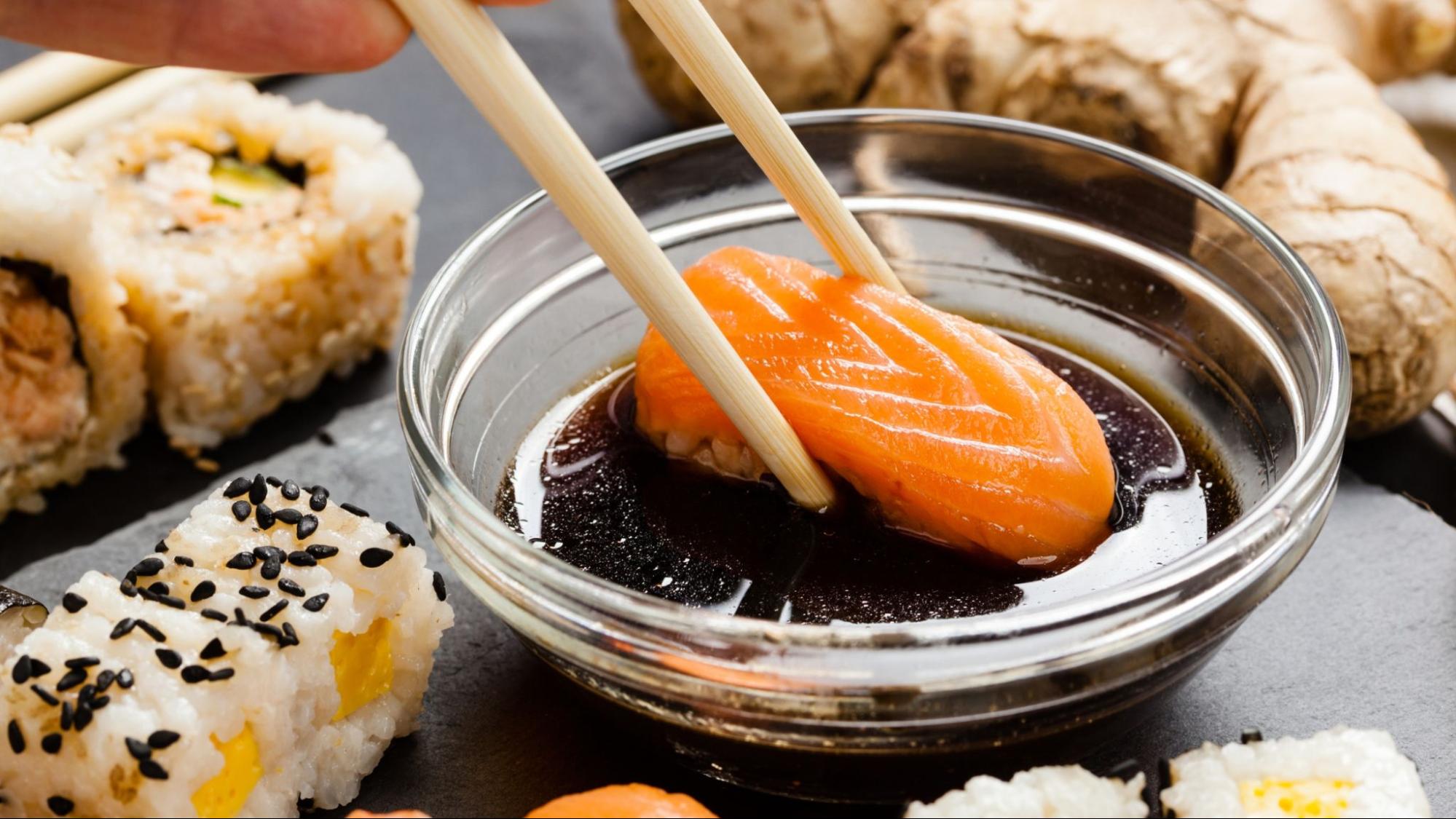
Looking Into the Difference Between Sparkling and Still Water
Hydration is a crucial part of human life. According to the U.S. National Academies of
Get Prepared for Easter with Fresh Farms | Now Available Baby Lambs
(Please Ask Our Meat Department For Assistance. Available at all stores except for Devon Ave)

If you’re a fan of sushi, you know that the sauces can make or break the dish. From the classic soy sauce to the fiery wasabi, there are a variety of sushi sauces that can elevate your dining experience. In this blog post, we’ll explore some of the different types of sushi sauce, including their origins and how they are used.
Before we explore the details of each sauce, it’s worth mentioning that the quality of the ingredients used in these sauces can greatly impact their flavor. That’s why many sushi chefs source their ingredients from high-quality markets, such as the Fresh Farms Market in Chicago. By using fresh and high-quality ingredients, they are able to create sauces that are not only delicious but also healthier for you.
Next up, we’ll examine several varieties of sushi sauce in greater detail.
Perhaps the most well-known sushi sauce, soy sauce, has been a staple in Japanese cuisine for centuries. Made from soybeans, wheat, water, and salt, soy sauce is brewed over a period of several months to develop its distinct umami flavor.
There are several different types of soy sauce, including light soy sauce, dark soy sauce, and tamari. Light soy sauce is the most commonly used in sushi and has a lighter, more delicate flavor than dark soy sauce. Tamari, on the other hand, is a wheat-free soy sauce that is often used by those with gluten sensitivities.
When it comes to sushi, soy sauce is typically served on the side and used as a dip for the sushi rolls.
If you’re looking for a sauce that packs a punch, wasabi is the way to go. Made from the root of the wasabi plant, this sauce has a strong, pungent flavor that can clear your sinuses in no time.
Traditionally, wasabi is served as a paste alongside sushi and is meant to be mixed with soy sauce to create a dipping sauce. However, many restaurants in the United States serve imitation wasabi made from horseradish and food coloring, which lacks the nuanced flavor of the real thing.
Also known as unagi sauce, eel sauce is a sweet and savory sauce that is typically drizzled over eel sushi rolls. Made from soy sauce, sugar, and mirin (a sweet rice wine), eel sauce has a caramelized flavor that pairs perfectly with the rich flavor of the eel.
While eel sauce is most commonly used with eel sushi, it can also be used as a dipping sauce for other types of sushi rolls.
Ponzu sauce is a citrus-based sauce that is made from a combination of soy sauce, rice vinegar, and citrus juice (usually lemon or lime). The sauce has a tangy flavor that pairs well with sushi rolls that contain seafood, such as tuna or salmon.
In addition to being used as a dipping sauce, ponzu sauce can also be used as a marinade for fish or as a salad dressing.
For those who like a little heat with their sushi, spicy mayo is a popular choice. Made from mayonnaise and sriracha sauce, this creamy sauce has a spicy kick that can add a whole new level of flavor to your sushi rolls.
Spicy mayo is often used as a topping for sushi rolls, but it can also be used as a dipping sauce or a spread for sushi burritos.
There are many different types of sushi sauce to explore and try out. Whether you prefer the classic flavor of soy sauce or the fiery kick of wasabi, there’s a sauce out there that can take your sushi game to the next level.
When it comes to sushi, the quality of the ingredients used can greatly impact the overall flavor and texture of the dish. That’s why many sushi chefs and home cooks alike choose to source their ingredients from high-quality markets, such as the Fresh Farms Market in Chicago.
In addition to offering high-quality ingredients, markets like Fresh Farms can also provide inspiration for new and exciting sushi recipes. For example, if you see a new type of fish or vegetable at the market, you may be inspired to try it in a sushi roll or experiment with a new sauce or seasoning. This can be a great way to expand your culinary horizons and discover new flavors and textures.
Overall, whether you’re a seasoned sushi chef or a beginner looking to try your hand at making sushi at home, sourcing your ingredients from a high-quality market like Fresh Farms can make a big difference in the quality and flavor of your sushi. By using fresh, sustainably sourced ingredients and experimenting with new flavors and ingredients, you can create sushi that is both delicious and healthy. Be sure to check out our weekly specials for exclusive savings on your favorite products!

Hydration is a crucial part of human life. According to the U.S. National Academies of

The quality of your meals and drinks can vary based on the ingredients you use.

If you’re looking to celebrate national french fry day, you might want to take it

You won’t always find the stuff you need for sushi when you head to the

Sourcing ingredients for international cuisine can be challenging, especially if you want to make it
Eat well.
Save time.
Live better.